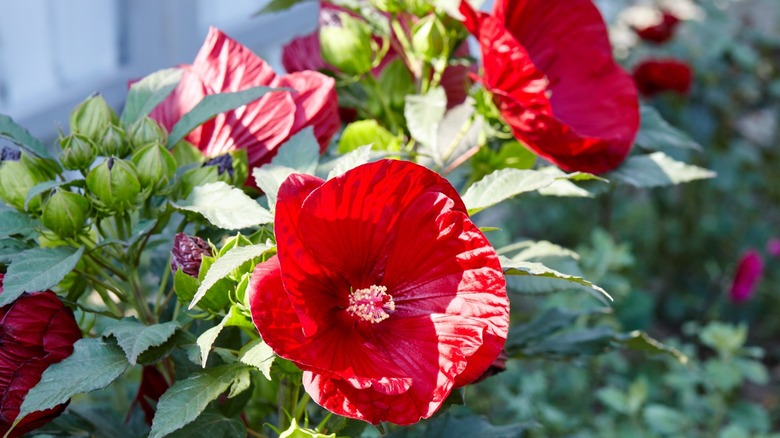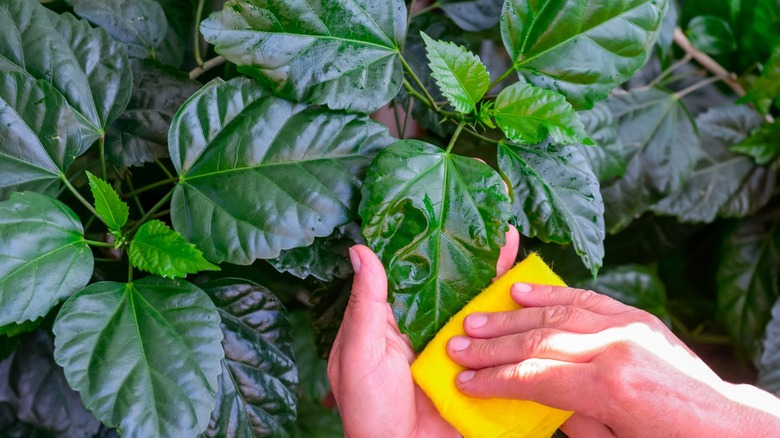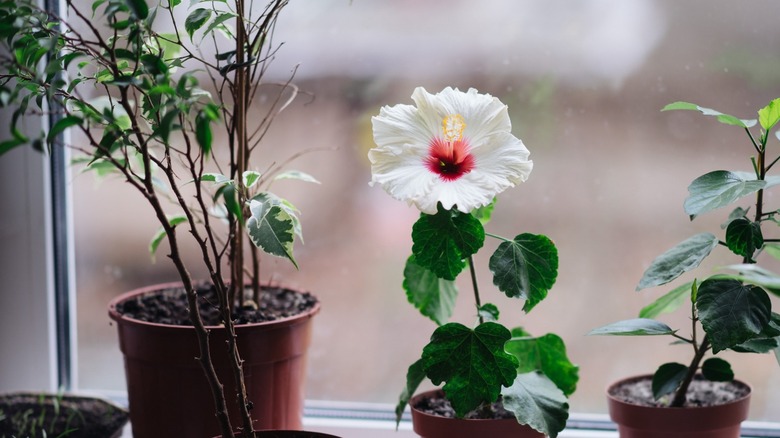Do You Need To Take Your Tropical Hibiscus Inside For The Winter?
Tropical hibiscus flowers can be difficult to grow, especially during the cold season. In most climates, you'll need to bring them inside for the winter. Exposure to temperatures below 50 degrees Fahrenheit over just a handful of nights can kill a tropical hibiscus. The good news is that it makes a wonderful houseplant and can even provide some beautiful blooms when it's cold and dreary outside. If it's not possible to bring it indoors, there are a couple of other options available as well.
Many people love these tropical plants that can grow as many as 24 inches in a year and produce blooms that can reach a diameter of 6 inches. The blooms on the tropical varieties of hibiscus last just one day, but they bloom continuously over the growing season and, if conditions are right, even into the fall and winter! Since they are native to tropical regions in Asia, they thrive in warmth and humidity. The flowers come in white, red, pink, purple, orange, and yellow, and their beauty is stunning. Given this, it's understandable to want to know if you should bring them inside as the weather turns colder.
Bring tropical hibiscus indoors as a houseplant
One of the best ways to ensure that your tropical hibiscus survives the winter is to bring it inside and treat it as a houseplant. To prepare it for indoor living, start two or three weeks early and wash it with plain water about twice a week to remove all pests. For the last wash, use neem oil or another horticultural oil and thoroughly cover all surfaces of the plant, including the underside of the leaves. This will significantly reduce the chances of common pests like spider mites that thrive indoors. You can move the tropical hibiscus into the house when it's completely dry.
The best spot for your hibiscus is where it will get some sunlight, such as close to a window. You can also use growing lights if necessary. Keep fertilizing your hibiscus during the winter season; otherwise, it can fall into deep dormancy and begin to deteriorate. A timed-release fertilizer is controlled by temperature and will be perfect for winter fertilization needs. Another aspect to keep in mind is that you can prune back the tropical hibiscus more than many other types of plants without harming it. Therefore, if it's too big, you can cut it down to a more manageable size. You can safely remove up to half of a hibiscus shrub, and since they grow back slowly during the winter, this may solve the problem of size.
Store tropical hibiscus in dormant stage or take cuttings
If bringing your tropical hibiscus inside is not an option, you still have a couple of alternative choices to consider. If you live in a zone where the temperature drops below 50 degrees Fahrenheit, you can leave it outside to go dormant for the winter. Alternatively, you can force the plant into dormancy and store it that way. Both approaches will reduce the amount of care required, and you can keep the tropical hibiscus in a cool, dark place. In this case, you only need to monitor it about once every 30 days, providing just enough water to stop the soil from becoming bone-dry.
The other option is to simply take some cuttings from the tropical plant and put them in water for the winter. Choose a day when it's still above 60 degrees Fahrenheit, and make sure each cutting is at least 4 inches tall with plenty of leaves. Remove the leaves below the water line and keep the water fresh. Roots will eventually sprout, after which you can put the cuttings in their own containers with potting soil, or leave them in the water until spring. Just be sure to place them in a window.


